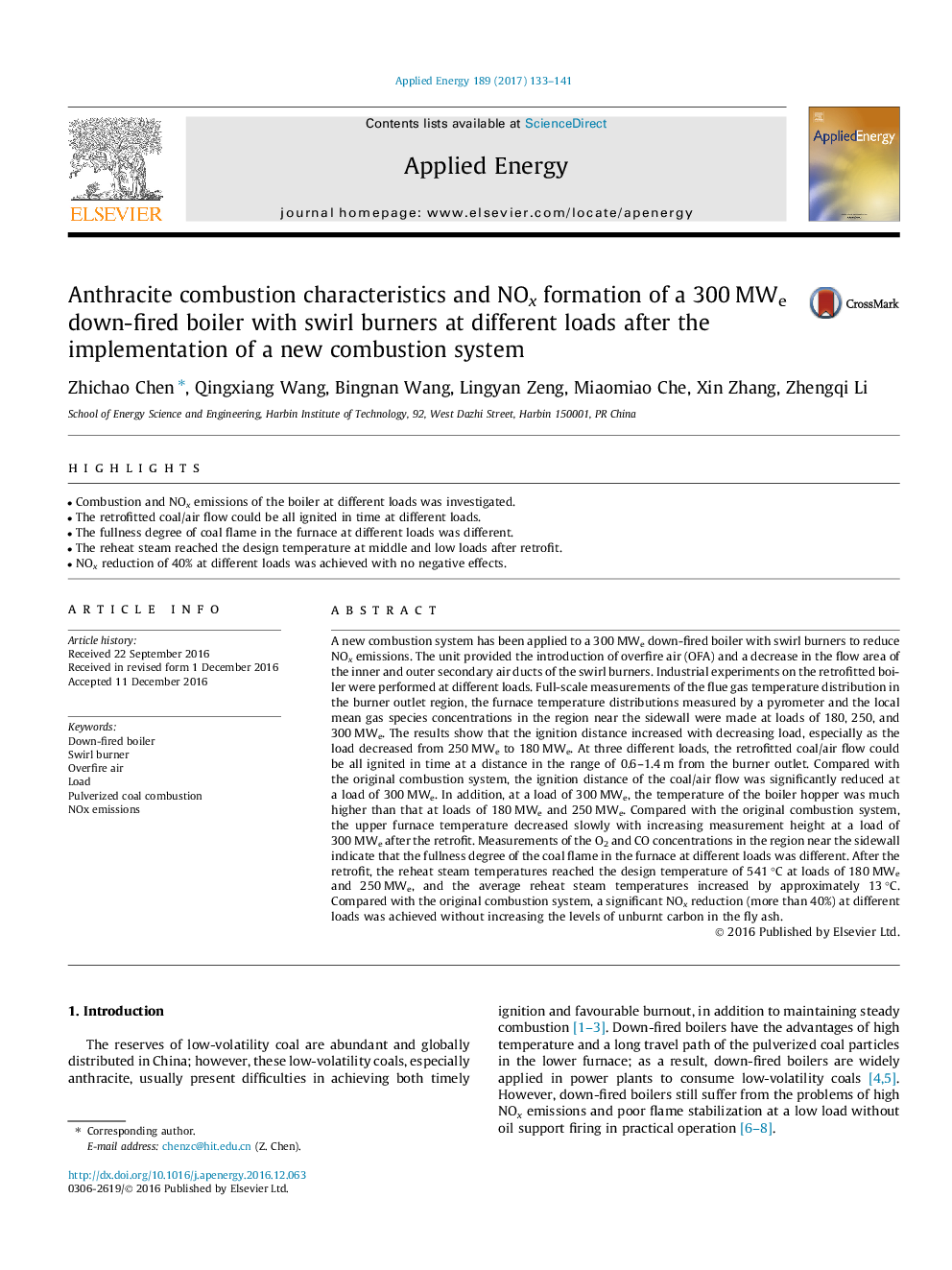| کد مقاله | کد نشریه | سال انتشار | مقاله انگلیسی | نسخه تمام متن |
|---|---|---|---|---|
| 4916742 | 1428101 | 2017 | 9 صفحه PDF | دانلود رایگان |
عنوان انگلیسی مقاله ISI
Anthracite combustion characteristics and NOx formation of a 300Â MWe down-fired boiler with swirl burners at different loads after the implementation of a new combustion system
دانلود مقاله + سفارش ترجمه
دانلود مقاله ISI انگلیسی
رایگان برای ایرانیان
کلمات کلیدی
موضوعات مرتبط
مهندسی و علوم پایه
مهندسی انرژی
مهندسی انرژی و فناوری های برق
پیش نمایش صفحه اول مقاله

چکیده انگلیسی
A new combustion system has been applied to a 300 MWe down-fired boiler with swirl burners to reduce NOx emissions. The unit provided the introduction of overfire air (OFA) and a decrease in the flow area of the inner and outer secondary air ducts of the swirl burners. Industrial experiments on the retrofitted boiler were performed at different loads. Full-scale measurements of the flue gas temperature distribution in the burner outlet region, the furnace temperature distributions measured by a pyrometer and the local mean gas species concentrations in the region near the sidewall were made at loads of 180, 250, and 300 MWe. The results show that the ignition distance increased with decreasing load, especially as the load decreased from 250 MWe to 180 MWe. At three different loads, the retrofitted coal/air flow could be all ignited in time at a distance in the range of 0.6-1.4 m from the burner outlet. Compared with the original combustion system, the ignition distance of the coal/air flow was significantly reduced at a load of 300 MWe. In addition, at a load of 300 MWe, the temperature of the boiler hopper was much higher than that at loads of 180 MWe and 250 MWe. Compared with the original combustion system, the upper furnace temperature decreased slowly with increasing measurement height at a load of 300 MWe after the retrofit. Measurements of the O2 and CO concentrations in the region near the sidewall indicate that the fullness degree of the coal flame in the furnace at different loads was different. After the retrofit, the reheat steam temperatures reached the design temperature of 541 °C at loads of 180 MWe and 250 MWe, and the average reheat steam temperatures increased by approximately 13 °C. Compared with the original combustion system, a significant NOx reduction (more than 40%) at different loads was achieved without increasing the levels of unburnt carbon in the fly ash.
ناشر
Database: Elsevier - ScienceDirect (ساینس دایرکت)
Journal: Applied Energy - Volume 189, 1 March 2017, Pages 133-141
Journal: Applied Energy - Volume 189, 1 March 2017, Pages 133-141
نویسندگان
Zhichao Chen, Qingxiang Wang, Bingnan Wang, Lingyan Zeng, Miaomiao Che, Xin Zhang, Zhengqi Li,